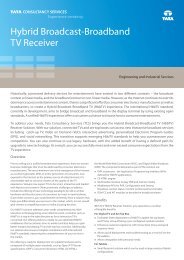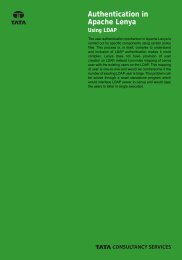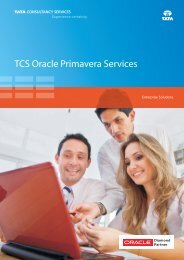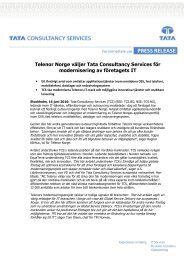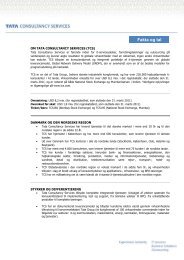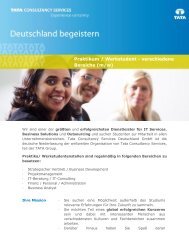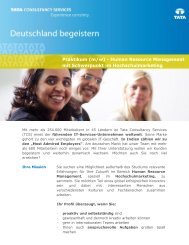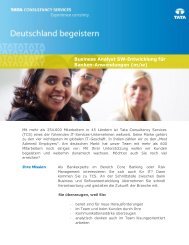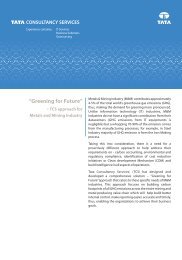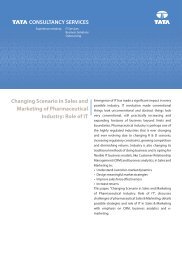Knowledge Management using Enterprise Content Management ...
Knowledge Management using Enterprise Content Management ...
Knowledge Management using Enterprise Content Management ...
Create successful ePaper yourself
Turn your PDF publications into a flip-book with our unique Google optimized e-Paper software.
<strong>Enterprise</strong> <strong>Content</strong> <strong>Management</strong> Components<br />
<strong>Enterprise</strong> <strong>Content</strong> <strong>Management</strong> has several components that enable enterprises to manage content<br />
effi ciently and effectively. These are Document <strong>Management</strong> System, Business Process <strong>Management</strong>,<br />
Forms Processing, <strong>Enterprise</strong> Report <strong>Management</strong>, Digital Asset <strong>Management</strong>, Records <strong>Management</strong> etc.<br />
Tata Consultancy Services (TCS) has developed a broad ECM landscape architecture based on Service<br />
Oriented Architecture (SOA) that is illustrated in the following diagram:<br />
Design Consideration<br />
End User Perspective<br />
Capture Store & Reuse Access & Distribution<br />
Solution Blueprint<br />
DMS Forms WCM DAM ERM RM<br />
Services (For End User/Application Use)<br />
Administration Tools<br />
Library Services<br />
Lifecycle Services<br />
ECM Infrastructure<br />
Storage Scanning Portal Collaboration Desktop App<br />
Fig 1 ECM landscape architecture<br />
is the review, revision, and approval process for any piece of content according to user-defi ned business<br />
rules. Truly robust solutions allow you to manage.<br />
ECM components needs to be supported by infrastructure components such as portals, collaborative tools,<br />
desktop applications, email management, etc. The service oriented architecture enables these multiple<br />
applications to be managed through services which are common thus enabling the enterprise to leverage<br />
the ECM infrastructure for various departments / applications that an enterprise deploys.<br />
Document <strong>Management</strong> Systems<br />
Document <strong>Management</strong> Systems (DMS) provides facility to capture, track and store images of paper<br />
documents. The images are categorized and associated with meta data so that they can be easily retrieved,<br />
moved within an enterprise, archived or destroyed based on a criteria set within an enterprise or a business<br />
unit. DMS also provides check-in, check-out, storage and retrieval of electronic fi les such as word processor,<br />
power points, spreadsheets, PDF documents etc.<br />
DMS is made up of software designed to manage all types of documents, including scanned, electronic<br />
and paper. Documents are stored in an ECM repository that facilitates search, retrieval, printing and<br />
distribution.<br />
<strong>Enterprise</strong> <strong>Content</strong> <strong>Management</strong> System 4<br />
TATA CONSULTANCY SERVICES<br />
Line Services<br />
Secured Environment<br />
Conversion Services<br />
Integration Services<br />
Architecture Consideration



